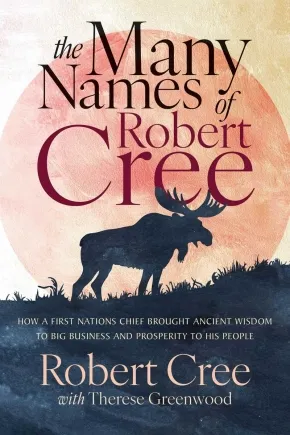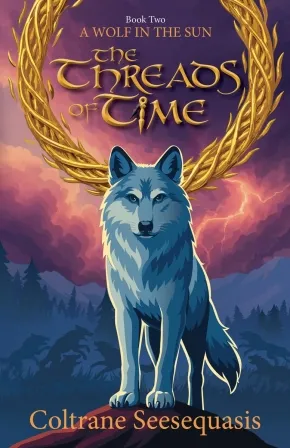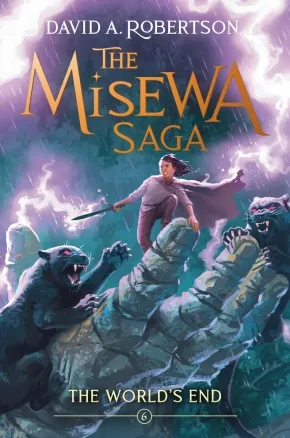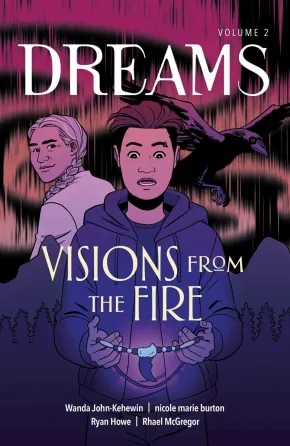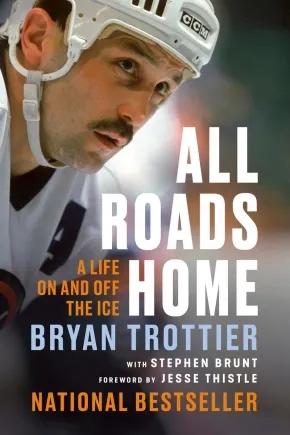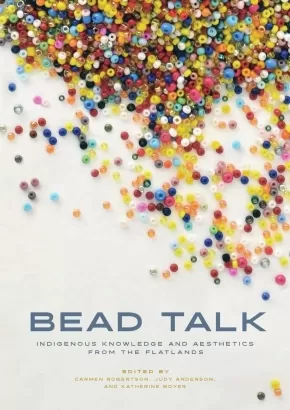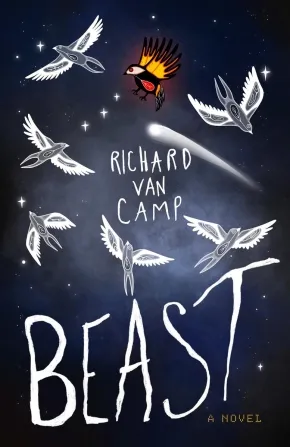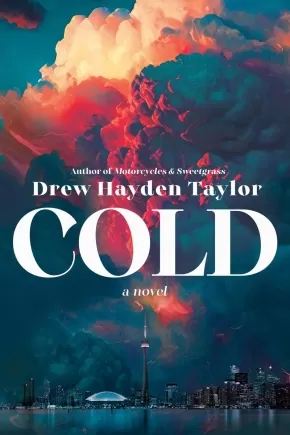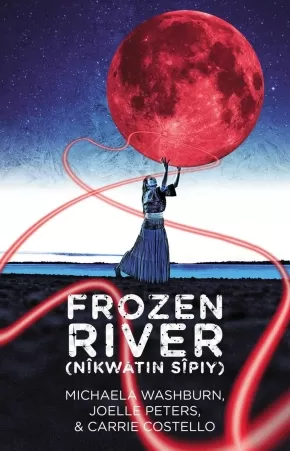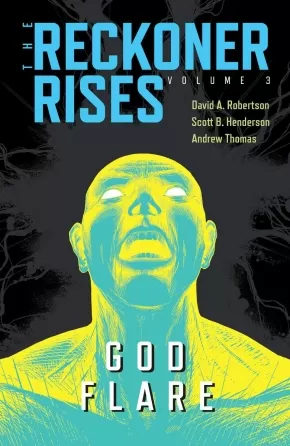
Cree (Nehiyawak)
16
-
30
of
174 Results;
Sort By
Go To
of 12
Surviving the City Teacher Guide: Exploring Identity, Allyship, and Social Action for Meaningful Change in Grades 7-12
$25.95
Format:
Paperback
Text Content Territories:
Indigenous Canadian; First Nations; Anishinaabeg; Cree (Nehiyawak);
ISBN / Barcode: 9781774921401
Synopsis:
Synopsis:
This updated Teacher Guide for Surviving the City is designed to accompany the Surviving the City series of graphic novels written by Tasha Spillett. This guide provides support for teachers to address sensitive topics in the classroom including racism; caregiver illness; the child welfare system; residential schools; and Missing and Murdered Indigenous Women, Girls, and Two-Spirit People. With the release of the third volume of Surviving the City, this guide has been updated to include revisions to the original lessons, two brand-new lessons, as well as up-to-date curriculum correlation charts that match current curriculum outcomes and expectations in Ontario, British Columbia, and Manitoba.
This teacher guide is designed to be a no-prep resource for educators suitable for stand-alone lessons or as a complete unit plan. The lessons in this teacher guide:
- support teachers with clear and concise instructions using the Activate, Acquire, Apply, and Assess (AAAA) format
- guide students in exploring, researching, and sharing the essential themes of the graphic novels
- are infused with Indigenous pedagogical practices
The Teacher Guide for Surviving the City is best suited for use with students in grades 7–12 taking English Language Arts; First Nations, Métis, and Inuit Studies; Global Issues; and similar subjects.
Educator Information
The student books for this work can be found here: Surviving the City Series.
Additional Information
91 pages | 8.50" x 11.00" | Paperback
The Many Names of Robert Cree: How a First Nations Chief Brought Ancient Wisdom to Big Business and Prosperity to His People
$26.95
Format:
Paperback
Reading Level: N/A
ISBN / Barcode: 9781770418301
Synopsis:
Synopsis:
A vital account of the life and many names of Robert Cree, and his plan for a peaceful, sincere, and just path to reconciliation in an angry and chaotic world.
His mother called him “Bobby Mountain.” Elders called him “Great Man.” His people called him “Chief.” Oil men called him “Mr. Cree.” But the government called him “Number 53.” Robert Cree was all of these while facing his people’s oppressors and freeing the ghosts of tortured spirits.
The Many Names of Robert Cree is his first-person account of survival in a brutally racist residential school system designed to erase traditional Indigenous culture, language, and knowledge. It is also the story of an epic life of struggle and healing, as Cree takes the wisdom of his ancestors and a message of reconciliation to the halls of government and to industry boardrooms.
In the storytelling tradition of his people, Cree recounts his early years in the bush, his captivity at a residential school, his struggles with addiction, his political awakening as one of Canada’s youngest First Nation Chiefs, and the rising Indigenous activism of the late 20th and early 21st centuries. He also recounts the oil industry’s arrival on his poverty-stricken reserve and the ensuing struggle to balance economic opportunity with environmental challenges.
Throughout, Cree’s leadership is rooted in his unshakable commitment to the sacred traditional teachings of his people. His beliefs give him the strength to focus on hope, dignity, and building a better future for his community. Now a respected Elder and spiritual leader, Cree champions forgiveness as a powerful force that can bring healing and transformation for all.
Additional Information
264 pages | 6" x 9" | Paperback
The Threads of Time
$25.00
Format:
Paperback
Text Content Territories:
Indigenous;
ISBN / Barcode: 9781928120513
Synopsis:
Synopsis:
After uncovering long forgotten secrets hidden deep beneath the earth, Silversong now finds himself in the middle of a battle for the soul of the Four Territories. On one side is the Heretic, the leader of the exiles intent on destroying the Wolven Code and conquering all wolfkind by force. On the other side is the Warden, who aims to impose her dogmatic and oppressive interpretation of the Wolven Code on all the packs.Silversong understands that the Four Territories cannot truly thrive when confined to the Warden's narrow vision, but he also can't let the Heretic bring devastation to all who resist him. By using his newfound powers, Silversong takes it upon himself to break the boundaries between the Four Territories and unite them as one, undermining the Warden's authority in the process. Only by standing together as true allies can they hope to defeat the enemy.
Reviews
"A mysterious, magically animated landscape juiced by superb sensory detail. The wolves of the Northlands are plagued by infighting among a threadbare alliance of packs. Enter Silversong, desperate to unite wolfkind against the enemy from without as well as the treachery within of blighted tradition and toxic loyalties. He is a hero with a brilliant weapon he can’t quite master and a jumbled head full of futures pitted against a dire present. Terrified and defiantly brave, frustrated and stalwart, Silversong is our guide to a world of wind weavers and quicksand conjurors. What an exciting, big-hearted romp into a fantastical kingdom that is eerily familiar." -- Tim Wynne-Jones, author of The Starlight Claim
Educator & Series Information
Recommended for ages 13 to 17.
This is the second book in the Wolf in the Sun series.
Additional Information
250 pages | 5.50" x 8.50" | Paperback
The World's End (HC)
$24.99
Format:
Hardcover
Text Content Territories:
Indigenous Canadian; First Nations; Cree (Nehiyawak); Swampy Cree ;
ISBN / Barcode: 9781774883372
Synopsis:
Synopsis:
Eli must embrace his unique heritage and make an impossible decision about his future, and the future of Misewa, in this thrilling last adventure in the award-winning, Narnia-inspired Indigenous middle-grade fantasy series.
Eli, Morgan and Emily manage to free themselves from captivity as the battle between the humans, animal beings, and Bird Warriors rages on. But there's another, more personal battle, as Eli and an unlikely ally fight to save Mahihkan’s life through a previously forbidden portal. When the Sleeping Giant rumbles to life, the stakes hit an all-time high, and Eli has to reach deep within himself to summon the power so that he can protect Misewa against the dangers of colonization . . . forever.
Educator & Series Information
Recommended ages 10+.
This is Book 6 of the Misewa Saga. Narnia meets traditional Indigenous stories of the sky and constellations in this epic middle-grade fantasy series from award-winning author David Robertson.
Additional Information
280 pages | 5.50" x 8.25" | Hardcover
Visions From the Fire: Dreams Vol. 2
$24.95
Artists:
Format:
Paperback
Text Content Territories:
Indigenous Canadian; First Nations; Cree (Nehiyawak); Plains Cree; Kehewin Cree Nation;
ISBN / Barcode: 9781774920657
Synopsis:
Synopsis:
A summer road trip takes a turn for the spiritual when Damon stumbles into a vision quest.
A bear and her cub, a strange silver ring, and an ancestor from long ago… Join Damon as he unravels these mysteries through a vision quest in this graphic novel for young adults.
For Damon Quinn, things have started to look up. He’s graduated high school, saved enough money to buy his first car, his old bully has kind of become a friend, and he and Journey are growing closer. Ready for adventure, Damon, his mom Marnie, and Journey take a road trip out to Kehewin Cree Nation to attend a Sweat Ceremony and a Powwow, as well as reconnect with family.
When Marnie learns of Damon's plan to meet up with his estranged father, the news sends shockwaves through the group. But Damon isn’t the only one keeping secrets. As Damon stumbles into a vision quest, he’ll discover more than he bargained for about his own history and the history his mother would prefer he never found out.
Educator & Series Information
Recommended for ages 13 to 18.
This is the second book in the Dreams series.
Big Ideas: Aspects of Indigenous Cultures: Spirituality and Ceremony, Aspects of Indigenous Cultures: Sweat Lodge, Contemporary Setting, Diverse and Inclusive Representation: Addiction, Diverse and Inclusive Representation: Depression and Suicide, Diverse and Inclusive Representation: Identity, Social Justice: Family Separation, Social Justice: Intergenerational Trauma, Social Justice: Impacts of Colonization and Colonialism
Additional Information
80 pages | 6.50" x 10.00" | 75 colour illustrations | Paperback
All Roads Home: A Life On and Off the Ice (PB)
$24.00
Format:
Paperback
Text Content Territories:
Indigenous Canadian; First Nations; Anishinaabeg; Ojibway; Cree (Nehiyawak); Métis;
Reading Level: N/A
ISBN / Barcode: 9780771084492
Synopsis:
Synopsis:
A poignant and inspiring memoir of the people and challenges that shaped the life and career of Canada's most decorated Indigenous athlete.
Over the course of his incredible career, Bryan Trottier set a new standard of hockey excellence. A seven-time Stanley Cup champion (four with the New York Islanders, two with the Pittsburgh Penguins, and one as an assistant coach with the Colorado Avalanche), Trottier won countless awards and is a member of the Hockey Hall of Fame and the Canadian Sports Hall of Fame. In 2017, he was named one of the NHL's Top 100 Players of All Time.
Trottier grew up in Val Marie, Saskatchewan, the son of a Cree/Chippewa/Metis father and an Irish-Canadian mother. All Roads Home offers a poignant, funny, wise, and inspiring look at his coming of age, both on and off the ice. It is a unique memoir in which Trottier shares stories about family, friends, teammates, and coaches, the lessons that he has learned from them, and the profound impact they have had in shaping the person he has become.
Some of the incredible characters featured in the book include Trottier's father Buzz; legendary Islanders coach Al Arbour; teammates Clark Gillies and Mike Bossy; and the Penguins' Mario Lemieux, to name but a few. He'll also talk about the high school English teacher and guidance counsellor who helped him develop self-confidence and encouraged him as a writer: Governor General's Award–winning poet, Lorna Crozier.
All Roads Home also includes a Foreword from bestselling author Jesse Thistle (From the Ashes) and two very special Afterwords: one from Trottier's daughter, Lindsy Ruthven, and the other from his life-long friend, beloved hockey great Dave "Tiger" Williams.
Additional Information
304 pages | 5.16" x 7.95" | Paperback
Bead Talk: Indigenous Knowledge and Aesthetics from the Flatlands
$27.95
Format:
Paperback
Text Content Territories:
Indigenous Canadian; First Nations; Métis;
Reading Level: N/A
ISBN / Barcode: 9781772840650
Synopsis:
Synopsis:
Sewing new understandings.
Indigenous beadwork has taken the art world by storm, but it is still sometimes misunderstood as static, anthropological artifact. Today’s prairie artists defy this categorization, demonstrating how beads tell stories and reclaim cultural identity. Whether artists seek out and share techniques through YouTube videos or in-person gatherings, beading fosters traditional methods of teaching and learning and enables intergenerational transmissions of pattern and skill.
In Bead Talk, editors Carmen Robertson, Judy Anderson, and Katherine Boyer gather conversations, interviews, essays, and full-colour reproductions of beadwork from expert and emerging artists, academics, and curators to illustrate the importance of beading in contemporary Indigenous arts. Taken together, the book poses and responds to philosophical questions about beading on the prairies: How do the practices and processes of beading embody reciprocity, respect, and storytelling? How is beading related to Indigenous ways of knowing? How does beading help individuals reconnect with the land? Why do we bead?
Showcasing beaded tumplines, text, masks, regalia, and more, Bead Talk emphasizes that there is no one way to engage with this art. The contributors to this collection invite us all into the beading circle as they reshape how beads are understood and stitch together generations of artists.
Reviews
“An evocative, aesthetically gorgeous book that is rich in knowledge, relationality, and experience. Curated with care, rooted in artistic practice and lived experience, and embodying a polyvocal, collaborative spirit, it immerses the reader in the world of Indigenous beadwork on the prairies. Bead Talk carries teachings about decolonial love, healing and medicine, cultural knowledges, political and theoretical modes of action, gendered experience, and more. I can’t think of any other book like this—it is a gift!” — Aubrey Hanson
Educator Information
Contributors: Ruth Cuthand, Dayna Danger, Sherry Farrell Racette, Marcy Friesen, Felicia Gay, Franchesca [Fran] Hebert-Spence, Audie Murray, Cathy Mattes.
Table of Contents
Foreword – Brenda Macdougall
Who We Are
Introduction – Carmen Robertson, Judy Anderson, and Katherine Boyer
Part I: Conversations
1. Mentoring/Beading – Ruth Cuthand and Marcy Friesen
2. mîkisistahêwin (bead medicine) – Judy Anderson and Audie Murray
3. Parallel Lines Move Along Together: A Beaded Line that Connects Me to You – Katherine Boyer and Dayna Danger
4. The Power of Gathering: Revisiting the Seeds of Ziigimineshin – Franchesca Hebert-Spence and Carmen Robertson
5. Beads, Blood, and Curating Ruth Cuthand’s Art – Felicia Gay and Carmen Robertson
Part II: Essays
6. “Until We Bead Again”: The BU Beading Babe and Embodying Lateral Love and Generous Reciprocity – Cathy Mattes
7. Visiting Kin: Indigenous Flatland Beading Aesthetics – Carmen Robertson
8. If the Needles Don’t Break and the Thread Doesn’t Tangle: Beading Utopia – Sherry Farrell Racette
Afterword: Spreading the Bead Love Far and Wide
Additional Information
240 pages | 6.00" x 8.50" | 62 colour illustrations | Paperback
Beast: A Novel
$24.95
Format:
Paperback
Text Content Territories:
Indigenous Canadian; First Nations; Dene; Denesuline (Chipewyan); Tlicho (Dogrib); Cree (Nehiyawak); Métis;
ISBN / Barcode: 9781771624145
Synopsis:
Synopsis:
Returning to his favourite setting of Fort Simmer, Northwest Territories, Richard Van Camp brings his exuberant style to a captivating teen novel that blends the supernatural with 1980s-era nostalgia to reflect on friendship, tradition and forgiveness.
For as long as Lawson can remember, his life in a small Northwest Territories town has revolved around “the Treaty” between the Dogrib and the Chipewyan, set down centuries ago to prevent the return of bloody warfare between the two peoples.
On the Dogrib side, Lawson and his family have done their best to keep the pact alive with the neighbouring Cranes, a family with ancestral ties to a revered Chipewyan war chief. But even as Lawson and his father dutifully tidy the Cranes’ property as an act of respect, their counterparts offer little more than scowls and derision in return, despite the fact that both families are responsible for protecting the treaty.
Worse still, it seems that one of the Cranes’ boys is doing all he can to revive the old conflict: Silver, fresh out of jail, has placed himself in the service of a cruel, ghoulish spirit bent on destroying the peace. Now it's up to Isaiah Valentine, a Cree Grass Dancer, Shari Burns, a Metis psychic, and Lawson Sauron, a Dogrib Yabati—or protector—to face what Silver Cranes has called back.
This latest feat of storytelling magic by celebrated author Richard Van Camp blends sharply observed realism and hair-raising horror as it plays out against a 1980s-era backdrop replete with Platinum Blonde songs and episodes of Degrassi Junior High. Unfolding in the fictional town of Fort Simmer—the setting of previous Van Camp stories—Beast delivers a gripping, spirited tale that pits the powers of tradition against the pull of a vengeful past.
Educator Information
Young adult fiction.
Additional Information
312 pages | 5.50" x 8.50" | Paperback
Between the Pipes
$21.95
Artists:
Format:
Paperback
Text Content Territories:
Indigenous Canadian; First Nations; Cree (Nehiyawak);
ISBN / Barcode: 9781774921043
Synopsis:
Synopsis:
In this engrossing graphic novel, teen hockey player Chase learns more about himself and his identity in the face of prejudice and homophobia.
Thirteen-year-old Chase’s life and identity should be simple. He’s the goalie for his hockey team, the Eagles. He’s a friend to Kevin and Jade. He's Kookum's youngest grandchild. He’s a boy. He should like girls.
But it’s not that simple. Chase doesn’t like girls the way that the other boys do. It’s scary being so different from his peers. Scarier still is the feeling that his teammates can tell who he is—and that they hate him for it. If he pretends hard enough, maybe he can hide the truth.
Real strength and change can’t come from a place of shame. Chase’s dreams are troubled by visions of a bear spirit, and the more he tries to hide, the more everything falls apart. With the help of an Elder, and a Two-Spirit mentor, can Chase find the strength to be proud of who he is?
Between the Pipes explores toxic masculinity in hockey through the experiences of an Indigenous teen.
Reviews
“Highlights the importance of community and cultural connection as roots for embracing one’s identity.” — Kirkus Reviews
“The authors deftly confront multiple layers of intolerance exacerbated by toxic masculinity. Ojibwe artist RL uses saturated full color (with well-placed, empowering rainbows) to capture Chase’s self-empowering journey. The result is a compelling, hope-giving antidote against potential at-risk suicide among 2-Spirit/Indigenous LGBTQQIA+ youth.” — Booklist
“This hopeful...story offers valuable insight into Chase’s experience as a gay, Indigenous teen. Hockey and identity collide in this affirming graphic novel about recognizing and valuing one’s authentic self.” — School Library Journal
Educator Information
Recommended for ages 12 - 18.
Reading Level: Fountas & Pinnell Y
Additional Information
56 pages | 6.50" x 10.00" | Paperback
Cold: A Novel
$24.95
Format:
Paperback
Text Content Territories:
Indigenous Canadian; First Nations; Anishinaabeg; Cree (Nehiyawak);
Reading Level: N/A
ISBN / Barcode: 9780771002892
Synopsis:
Synopsis:
A tragic plane crash that leaves two women stranded and fighting for their lives kicks off this sweeping and hilarious novel from award-winning writer Drew Hayden Taylor that blends thriller, murder mystery, and horror with humour and spectacle.
Elmore Trent is a professor of Indigenous studies who finds himself entangled in an affair that's ruining his marriage; Paul North plays in the IHL (Indigenous Hockey League), struggling to keep up with the game that's passing him by; Detective Ruby Birch is chasing a string of gruesome murders, with clues that conspicuously lead her to both Elmore and Paul. And then there's Fabiola Halan, former journalist-turned-author and famed survivor of a plane crash that sparked a nationwide tour promoting her book.
What starts off as a series of subtle connections between isolated characters quickly takes a menacing turn, as it becomes increasingly clear that someone—or something—is hunting them all.
Taking tropes from the murder mystery, police procedural, thriller, and horror genres, Drew Hayden Taylor weaves a pulse-pounding and propulsive narrative with an intricate cast of characters, while never losing the ability to make you laugh.
Reviews
"Cold is an absolutely enthralling novel from a legendary writer and storyteller. Drew Hayden Taylor is a master of genuinely capturing contemporary Indigenous realities in fiction, making the vibrant characters in this exceptional story relatable and real. Cold is creepy and funny, smart and lively, and overall a strikingly dynamic book that will keep readers on edge from start to finish."—Waubgeshig Rice, author of Moon of the Crusted Snow and Moon of the Turning Leaves
"The myth of the Wendigo has shaped narratives from Pet Semetary to Shadow Country to The Hunger—but never in my reading has it been so cleverly and relevantly employed as it is in Drew Hayden Taylor's serpentine and haunting new novel, Cold." —Nick Cutter, author of The Troop and Little Heaven
Additional Information
368 pages | 5.50" x 8.25" | Paperback
Curve!: Women Carvers on the Northwest Coast
$45.00
Artists:
Format:
Hardcover
Text Content Territories:
Indigenous Canadian; First Nations;
Reading Level: N/A
ISBN / Barcode: 9781773272542
Synopsis:
Synopsis:
An eighty-year overview of wood and argillite carving by Indigenous women artists on the Northwest Coast.
Though women of the Northwest Coast have long carved poles, canoes, panels, and masks, many of these artists have not become as well known outside their communities as their male counterparts. These artists are cherished within their communities for helping to keep traditional carving practices alive, and for maintaining the dances, songs, and ceremonies that are intertwined with visual art production. This book, and an associated exhibition at the Audain Art Museum, gathers a range of sculptural formats by Indigenous women in order to expand the discourse of carving in the region.
Both the exhibition and publication are co-curated by Dana Claxton, artist, filmmaker and head of the University of British Columbia's Department of Art History, Visual Art and Theory; and Dr. Curtis Collins, the AAM's Director & Chief Curator. Commentaries by Skeena Reece, Claxton, and Marika Swan, and interviews with artists Dale Campbell and Mary Anne Barkhouse are presented alongside more than one hundred artworks from public and private collections across North America, including several newly commissioned pieces.
Featured artists include:
- Ellen Neel (Kwakwaka'wakw, 1916-1966) - Freda Diesing (Haida, 1925-2002) - Doreen Jensen (Gitxsan, 1933-2009) - Susan Point (Musqueam, b. 1952) - Dale Campbell (Tahltan, b. 1954) - Marianne Nicolson (Kwakwaka'wakw, b. 1969) - Arlene Ness (Gitxsan, b. 1970s) - Melanie Russ (Haida, b. 1977) - Marika Swan (Nuu-chah-nulth, b. 1982) - Morgan Asoyuf (Ts'msyen, b. 1984) - Cori Savard (Haida, b. 1985) - Cherish Alexander (Gitwangak, b. 1987) - Stephanie Anderson (Wetsuwet'en, b. 1991) - Veronica Waechter (Gitxsan, b. 1995)
Awards
- Winner of the 2025 Bill Duthie Booksellers' Choice Award
Additional Information
160 pages | 9.20" x 1.10" | 120 colour photos | Hardcover
Frozen River (nîkwatin sîpiy)
$18.95
Format:
Paperback
Text Content Territories:
Indigenous Canadian; First Nations; Anishinaabeg; Ojibway; Cree (Nehiyawak); Métis;
ISBN / Barcode: 9780369104892
Synopsis:
Synopsis:
Exploring reconciliation and connection through a story that spans seven generations, Frozen River (nîkwatin sîpiy) tells the story of two eleven-year-olds through the eyes of Grandmother Moon. Eilidh and Wâpam are born under the same blood moon, but Eilidh was born in Scotland and Wâpam in Kihci-Manito kâ ayapit, now known as Manitoba. After sailing across the ocean in hopes of a more prosperous life, Eilidh meets Wâpam deep in the forest, and the two become instant friends. Coming from vastly different worlds, Eilidh and Wâpam decide to teach each other about their ways of life. But when a sacred promise between them is broken, the relationship among cultures becomes jeopardized for generations to come.
Frozen River (nîkwatin sîpiy) shows audiences that an openness to learn from those who have protected and honoured the waterways for centuries can lead to healing and reconciliation.
Awards
- 2021 Sharon Enkin Plays for Young People Award winner
Reviews
"The show’s script cleverly makes important issues digestible for young audiences."— Van City Vince
Educator Information
Recommended for ages 8 to 14.
Additional Information
88 pages | 5.37" x 8.38" | Paperback
God Flare
$23.00
Artists:
Format:
Paperback
Text Content Territories:
Indigenous Canadian;
ISBN / Barcode: 9781774920442
Synopsis:
Synopsis:
Eva and Cole are back just in time to face Mihko’s latest threat: the terrifying results of human experimentation.
Cole and Eva are reunited once more. A new terror looms as Mihko Laboratories latest human experiments are about to be unleashed. Cole is on the long road to recovery, but he’s still struggling with survivor’s guilt. He must stay focused as he, Eva, and their friends prepare for the final showdown with Mihko.
After the events of Version Control, Brady’s mind is fractured, and he can’t distinguish between what really happened and what Mikho made him believe. Eva and Cole may have to face this terrifying threat without him. It’s a grim prospect, but a new discovery might just change everything: God Flare.
Will Brady recover enough to join the fight? Can Cole come to terms with his abilities in spite of his PTSD? And will God Flare help even the odds against Mihko?
Reviews
The art style is realistic and gritty, reflecting the serious and dystopian tone of the story. Colors are dark and muted, actions are clear, and special effects of the supernatural pop off the page, a marked contrast to more normal backgrounds and objects.” — Youth Services Book Review
Educator & Series Information
Recommended for grades 8 to 12.
This book is part of the graphic novel series, The Reckoner Rises, a continuation of The Reckoner trilogy. It is Book 3 in the series.
Additional Information
72 pages | 6.50" x 10.00" | Paperback
Indiginerds: Tales from Modern Indigenous Life
$30.95
Artists:
Format:
Paperback
Text Content Territories:
Indigenous Canadian;
ISBN / Barcode: 9781638991335
Synopsis:
Synopsis:
First Nations culture is living, vibrant, and evolving, and generations of Indigenous kids have grown up with pop culture creeping inexorably into our lives. From gaming to social media, pirate radio to garage bands, Star Trek to D&D, and missed connections at the pow wow, Indigenous culture is so much more than how it’s usually portrayed. Indiginerds is here to celebrate those stories!
Featuring an all-Indigenous creative team, Indiginerds is an exhilarating anthology collecting 11 stories about Indigenous people balancing traditional ways of knowing with modern pop culture. Includes work by Alina Pete, PJ Underwood, Kameron White, Rhael McGregory, and many more.
Educator Information
Recommended for ages 12 to 18.
Full Creator Listing: Tate Allen, Ida Aronson, Jordanna George, Raven John, Nipinet Landsem, Rhael McGregor, Sam “Mushki” Medlock, Alina Pete, Wren Rios, PJ Underwood, Kameron White
Additional Information
120 pages | 6.62" x 10.25" | Paperback
La saga Misewa: N° 1 - Les terres isolées
$21.99
Format:
Paperback
Text Content Territories:
Indigenous Canadian; First Nations; Cree (Nehiyawak); Swampy Cree ;
ISBN / Barcode: 9781039703643
Synopsis:
Synopsis:
Les histoires traditionnelles autochtones sur le ciel et les constellations rencontrent la légende de Narnia dans cette série fantastique et épique destinée aux préadolescents, écrite par l’auteur primé David A. Robertson.
Morgan et Eli, deux jeunes Autochtones contraints de quitter leur famille et leur communauté, sont réunis dans un foyer d’accueil à Winnipeg, au Manitoba. Ils se sentent déconnectés de leur culture, mais aussi les uns des autres, et peinent à s’intégrer à l’école et dans leur nouvelle maison… jusqu’à ce qu’ils découvrent un endroit secret, muré dans une chambre mansardée et inachevée.
Un portail s’ouvre sur une autre réalité, Askí, les menant sur des terres gelées et arides, où ils rencontrent un Ochek (un pêcheur). Seul chasseur à subvenir aux besoins de sa communauté affamée, Misewa, l’Ochek accueille les enfants humains et leur enseigne les méthodes traditionnelles de survie.
Alors que le besoin de nourriture se fait cruellement sentir, ils s’embarquent pour une mission dangereuse. Accompagnés d’Arik, un écureuil insolent qu’ils ont surpris à voler sur la ligne de chasse, ils tentent de sauver Misewa avant que l’hiver ne vienne tout geler, y compris eux.
Educator & Series Information
Recommended for ages 10+.
This book is part of La saga Misewa.
This is the French translation of The Barren Grounds.
Additional Information
Paperback
Sort By
Go To
of 12




